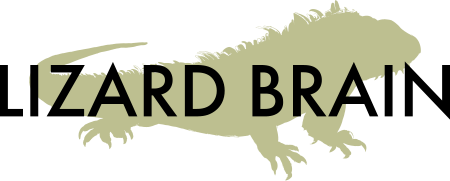TEDxLizardCreek 2017
We're very pleased to once again be a patron of TEDxLizardCreek! This will be the third time we'll be graphic recording the speakers. Check out the charts and event photos from 2014 and 2015. TEDxLizardCreek 2014 provided an opportunity to present "What's Wrong With This Picture," which makes the case for doodling in school, for the first time. Check out the action sketch version of "What's Wrong With This Picture" here.
Preparing for a TEDx
TEDx events present their own unique challenges. The talks are very fast, usually capped at eighteen minutes. They happen back to back, leaving little time to reset. And as often as not, they're done on a shoestring budget, meaning that supporting them is a balance of spending adequate time to prepare in lieu of other work.
The solution to the speed and tempo of the talks is to front-load as much of the drawing as possible prior to the talk. That is, preparing each chart in advance with the speaker's name and talk title along with any other visual elements. Of course, preparation comes at the cost of other work. So, how do you prepare a dozen or more charts in advance, with out spending days doing it?
For TEDxLizardCreek, I scaled up a method that I use in training: designing charts in Adobe Illustrator against a single template and printing them at a local FedEx. That way, I was able to dedicate most of my prep time to design, testing out different combinations of layouts, fonts, and graphics, and not in production. I also opted to go with entirely black and white charts, partly because the cost of printing in black and white is a fraction of printing in color, and partly because eliminating the need to color while drawing took some pressure off the time constraint. Plus, I've been on a black and white kick lately: I just think it looks cool.
For speed, foamcore is the way to go. I sized the charts to a standard foamcore size of 32"x40." That eliminated any need for cutting. If I'd had FedEx mount the paper charts on foamcore, it would of tripled the print cost, so I did it myself using foamcore that already had peel and stick adhesive. It turned out that the peel and stick wasn't necessary, and created bubbles and wrinkles in the paper that were invisible to the audience (see if you can spot them in the video above) but were an annoyance to me. After a couple of charts, I stopped using the prefab adhesive and instead used double-sided tape at each of the corners.
This approach presented a slight problem when a speaker revealed that he'd changed the title of his talk the day of the event. Of course, this didn't only affect me: programs had been printed, the website was live, and PR had already happened. So, the speaker was understanding when I couldn't change the chart the day of.
Another tactic to deal with the speed and tempo is to come up with an icon library in advance of the talk based on the speakers' abstracts. Even if you don't use them, this saves on time spent translating the spoken word into visuals.
Preparing an icon library. Resources include the Bikablo books, Diane Bleck's Discovery Doodles, Mike Rohde's Sketchnote Handbook, and Ed Emberley.
Note the pandas.



